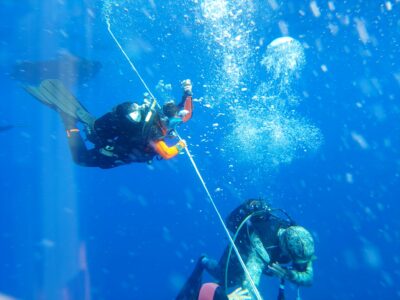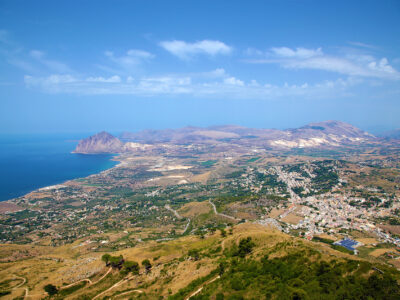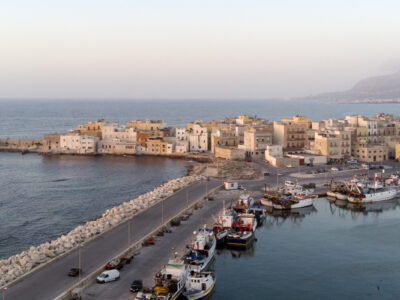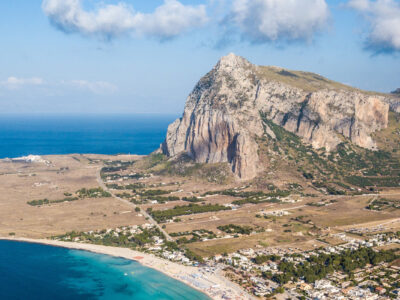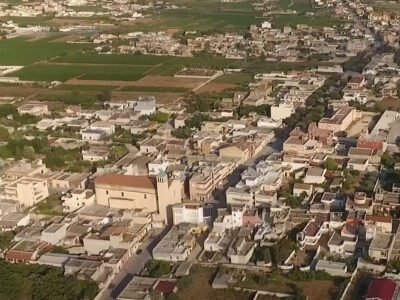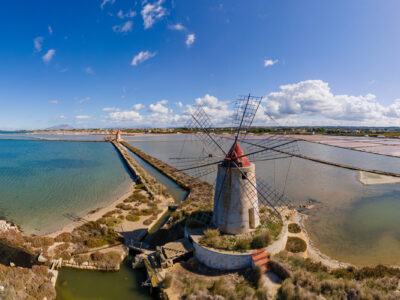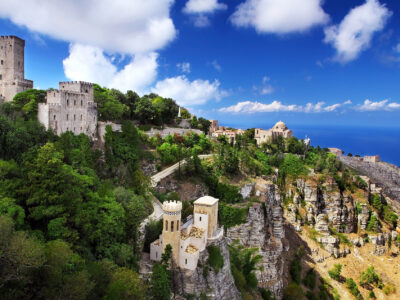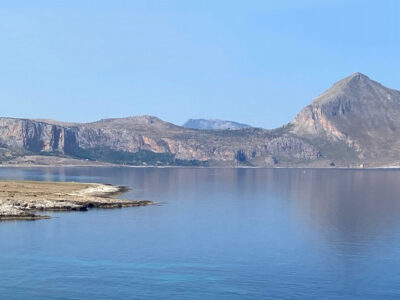The architectural structure visible today dates back to the 12th century; it was built using materials of an existing Roman sacred place, dedicated to Venus, and adapting it to the shape of the crag.
Inside of it resided the representatives of the royal authority: the “bajolo” (a civil judge and tax collector), the captain of the royal army and later the castellan.
Until the sixteenth century the castle was a royal Spanish square, later, between the 16th and 17th centuries, it was used as a prison. In 1872 the count Agostino Pepoli restored the fortification works at his own expense, rebuilt the pentagonal tower, fixed the public garden around the castle thus creating the beautiful park called Balio, so called because it was created in the place where the Bajolo once resided.
Inside there are some cells of the prison, one of which still preserves the chains binding prisoners to the wall.
In the courtyard, on a spur, once stood the “thèmenos” (enclosure) where inside there was a small altar; about the sanctuary remain only few drums of columns and fragments of calcareous frieze. Here, in the Middle Ages, was built a church dedicated to Our Lady of the Snow.
Looking northwards the ruins of a temple retaining wall can be seen, dating back to Roman times and in “opus rectum”.
Near the ancient temple stands the so-called “pozzo di Venere” (the well of Venus), which according to the legend was a pool where the goddess took a bathe. Some historians, instead, identify it as a place where the priestesses bathed after the rite of the sacred prostitution, others as a “favisa”, namely a pit in which the remains of the sacrifices to the goddess were deposited; less plausible the thesis of a granary.


